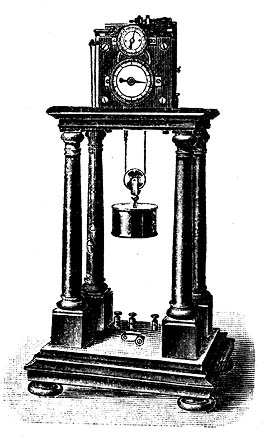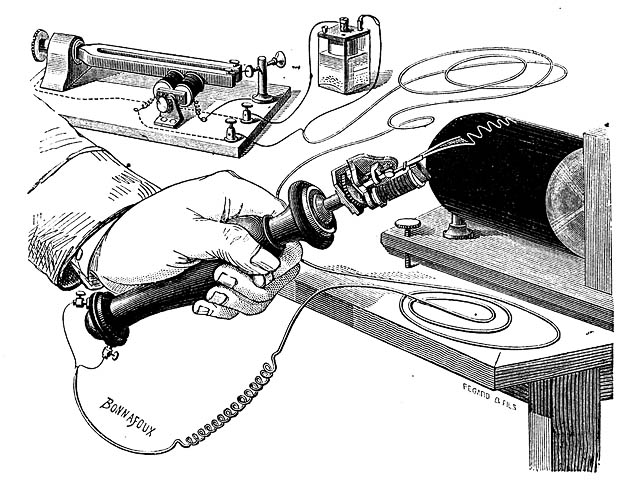|
|
|
The Neuramœbimeter - continued... The neuramœbimeter measures time by picturing it, and it pictures time by writing it. As much a chronoscopic as a chronographic device, it was introduced to the world of science in 1873 by the Viennese physiologist Sigmund Exner. Following Exner’s ideas and plans, a local instrument maker, Heinitz, furnished the innovative instrument. It experienced a rather brilliant career but quickly fell into oblivion. In 1874, the Austrian psychiatrist Heinrich Obersteiner, a friend of Exner’s, rushed to apply the neuramœbimeter as a ‘simple method for studying the cerebral performance in the mentally ill.’ Ten years later another Vienna-based Sigmund, future author of the Traumdeutung, used it for measuring the impact of cocaine on what he called the ‘psychological time of reaction’. 
Chronoscope by Hipp. Taken from Zimmermann, E. 1904. Apparate zu experimental-psychologischen Untersuchungen nach Angaben des Herrn Prof. Dr. Sommer. Leipzig 
Chronograph by Marey. Taken from Breguet, Louis. 1877. Catalogue Illustré: Appareils et matériaux pour la télégraphie électrique, instruments divers, électricité - physique mécanique - météorologie, physiologie, machines magnéto-électriques de gramme, lumière électrique. 3rd ed. Paris, p.95. |


